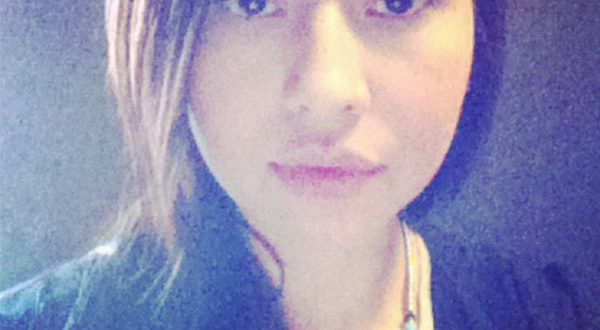This page is dedicated to Bella Laboucan-McLean. These words are a celebration of Bella’s life and spirit. For those who didn’t get a chance to know Bella during the 25 years of her life, we want to express to you just how amazing, unique and beautiful she was.
RECENT UPDATES:
Bella’s sister Melina wrote this op-ed in the New York Times.
The Toronto Star published this exclusive story: “There is no closure”
Watch video of the MMIW panel at NYC’s Lincoln Centre, including Bella’s sister Melina
BACKGROUND

More than two years after Bella’s death her case still remains unsolved and is listed as suspicious. We do not know why or how Bella fell 31 stories from a high-rise condo in downtown Toronto. We hope people will come forward to help us solve her case. It is also important for the police to know that this case is being closely followed not only by our family, but the larger community who are concerned about the unsolved cases of missing and murdered Indigenous women. We urge The Toronto Police Service to maintain focus on the details regarding Bella’s death and providing answers to our family.
We also encourage other families to submit their loved one’s stories to this community-run data base so we can collectively gather data on missing and murdered Indigenous women and girls and have it controlled by our families and communities.
About our Bella:
From a young age, Bella was a creative, bright and determined girl who aspired to meld her traditional beadwork skills with contemporary fashion. Bella always had a positive outlook on the world. She was able to find the humour in almost all situations, making jokes, and lightening the mood for everyone around her. She listened to all kinds of music, loved to dance, and she was the ever-present DJ, playing whatever fit the mood. Bella was sweet, supportive, loving and encouraging. But she was not one to mince words and was honest, straightforward and assertive when she needed to be. Even though she was an extrovert and liked to explore the world around her, Bella was also a homebody and you could find her at home tidying up, doing schoolwork, cooking or taking some down time listening to music. And like most 25 year olds, Bella loved social media and was often taking artistic photos and posting them on instagram and facebook. Bella loved to try foods from all around the world, an influence from the many high school or university friends she had from different parts of the globe. She could make a mean soup and bannock, and the best cookies. Bella encouraged her family and friends to enjoy the simple things in life, a good meal, a funny joke and precious time with friends and family.

Bella came from a strong family that was very supportive of her. Family was important to her, and it was hard for her to move away from home. She spoke with her family often, almost everyday, and sought advice from her parents, big sisters, aunties, uncles and family friends.
Bella was one of the lucky First Nations young people who grew up with both parents in her life who have been together for over 25 years. Her Mom and Dad have been teachers and educators who developed Cree curriculum for language revitalization for the past 3 decades. Both parents graduated with a Masters in Education. Language and culture was an important part of both their lives, and this was passed onto Bella. On both sides of the family, Bella’s grandparents and aunties are cultural knowledge carriers and maintain teachings and practice traditional artwork and beading that Bella continued into her life.

Bella’s work in reclaiming traditional knowledge was important to her and to our family, as she would be able to help us carry on our cultural traditions. Learning traditional Cree art and beadwork and adopting her own creative expressions through her craft of fashion was a resurgence of who we are as Indigenous peoples. That reclamation is a process that many missing and murdered women were a part of for their families, communities and future generations.
Bella, along with one of her older sisters, attended Portage College to learn and fine-tune skills in beading and tanning hide to produce many cultural items that you see here on this page. She also attended the University of Alberta to pursue a degree in textiles and then transferred to Humber College to complete her degree in Fashion Arts. It was her dream to honour our cultural traditions, artwork and beading while finding ways to blend new designs of her art with contemporary fashion.

When Bella decided to take a leap of faith to continue her education, it meant she had to leave her family and friends in Alberta and move to Toronto to pursue her dream of making a career in the fashion arts. Like many other Indigenous young women, this was a larger process of resurgence we see in urban centres, with strong Indigenous women who are very connected to their culture and home communities. It was not an easy choice because of her being extremely close to her family and it was a big move from northern Alberta to Toronto. It was here that she began to learn more about the fashion world, and the hard work it takes to make it on your own. Despite the distance from her family and friends, Bella continued to grow into an even more sophisticated, independent and tenacious young woman.

Before her death, Bella was starting to come into her own and expressing herself as she’d always imagined herself – daring to dream as a young girl coming from a little reserve in Northern Alberta. Bella’s ambitions were becoming reality and she was growing into the young woman she always wanted to be. She was just on the verge of realizing her dreams and was looking to continue fashion school in London, England later that year. She had found her wings and was ready to move onto the next chapter in her life. Her desire to find a place where she could meld fashion with traditional First Nations arts was no longer just a distant dream, it was within arms reach.

But Bella’s dreams were cut short, just after 3 months of graduating from Humber College she was found dead, leaving her family and friends without answers to the many questions we have been asking this past year.
For people who did not know Bella there exists a false perception that she passed away because she lived a high risk lifestyle but this is far from the truth. Bella cherished her life and she was looking forward to the many years ahead of her and talked regularly with her family about what her future goals and plans were. Regardless, the way Bella lived or the way any other Indigenous woman lives, should never justify the violence they experience in their lives. What puts Indigenous women in this society at risk is the ongoing legacies of colonialism “these issues are systemic. Blaming victims for their violent deaths are not going to result in the solutions we need to see for murdered and missing Indigenous women.
Bella was a positive influence on many in her life and the loss of her has been devastating and felt in so many people’s lives.

Bella’s younger brother, cousins and friends looked up to her, they admired what she was able to accomplish. She had a fun-loving spirit and a unique ability to make life feel so full.
Bella’s case still remains unsolved. The family is still seeking justice for what happened to our precious sister, daughter, cousin, niece and friend.
Her laugh and hugs are missed by everyone.
Violence against the Mother Earth is violence against women, the two are inextricably linked. It is not a coincidence that 1200 Indigenous women are murdered and missing in this country we call Canada. Indigenous women are five times more likely than non-Indigenous women to die from violence. Watch the video of Bella’s older sister Melina Laboucan-Massimo discuss the issues of violence against women, violence against the land, and environmental justice.
SHARE BELLA’S GIF ON SOCIAL MEDIA!

MEDIA COVERAGE:
TV Coverage
Audio Coverage
Online/Newspaper Coverage






